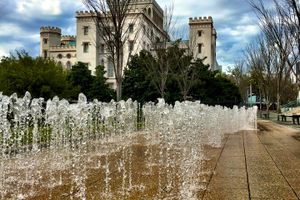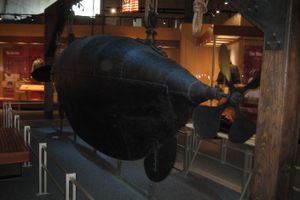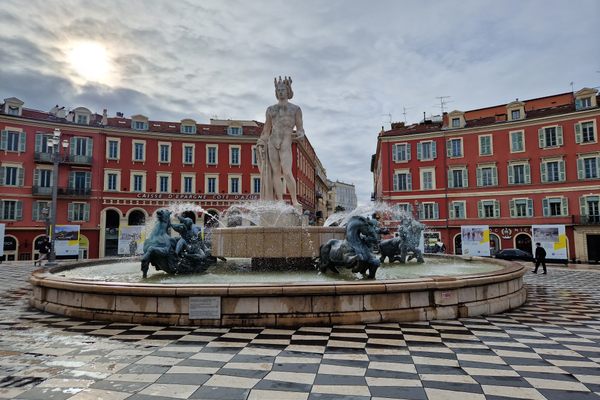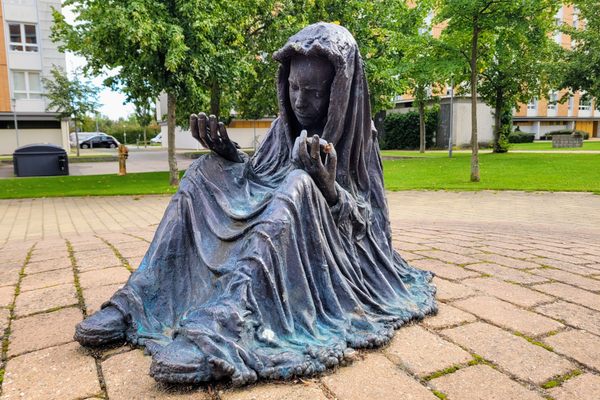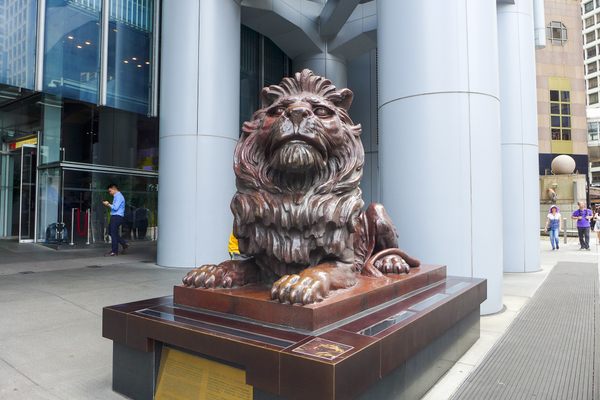About
The dollar sign, a founding father, an outdoor concert space in Baton Rouge: this seemingly disjointed collection of words are woven together in the story behind a sculpture located in Louisiana’s capital city. Now slightly weathered, with a green patinated surface, the bronze sculpture located near Baton Rouge’s modern downtown library depicts Oliver Pollock. Designed by renowned Baton Rouge sculptor and artist Frank Hayden and installed in 1979 in Galvez Plaza, the sculpture is one of few, if perhaps the only, depictions of this otherwise unknown hero and financier of the American Revolution.
Oliver Pollock was an Irish merchant who made his fortune in the Spanish Caribbean in the latter half of the 18th century. Based in New Orleans, Pollock was paid mostly in Spanish pesos, which were soon deemed the currency of choice as the American colonies revolted against the British. Supporting the American cause against the British, and desiring to engrain himself into the American financial landscape, Pollock provided 300,000 Spanish pesos to the American cause—equivalent to nearly $1 billion in today’s money. His efforts to recoup his losses ultimately backfired, and feeling the pressure from his creditors, he sought assistance from the Continental Congress. His thorough letters were read on the floor of Congress, but Congress ultimately did not have the funds to spare to cover Pollock.
It was in these letters and financial ledgers that Pollock sealed his lasting legacy. Yes, he was named the official representative of the Colonies in New Orleans by the Continental Congress, and yes, he raised troops for Bernardo de Gålvez, a Spanish Colonel and Governor of Spanish Louisiana, in order to successfully capture British forts along the Gulf Coast. But there was yet one more contribution that is recognizable the world over.
Having supported the American cause with Spanish pesos, or “ps,” Pollock’s writing of this shorthand merged the letters together into one symbol, which resembled a “$.” His friend and business partner, Robert Morris, who was also Washington’s Superintendent of Finance, chose to adopt the symbol, and by 1797 it was the official symbol for the currency for the new nation. There are no other records of its use prior to Pollock.
Pollock’s close ties to Louisiana ultimately resulted in the creation and installation of the sculpture of his likeness for Baton Rouge’s celebration of the U.S. bicentennial in 1976. The sculpture stands near an estate that Pollock once owned, but sold to cover his debts. It features the only known depiction of Pollock, along with a relief wall of soldiers, cannons, and civilians. On the back of this relief wall are plaques bearing the histories of Pollock, Galvez, and a depiction of the Battle of Baton Rouge, in which Spanish forces were victorious over the English in 1783 for the control of the city. Today, Galvez Plaza features a concert stage and is a popular location for outdoor festivals and musical performances, all held in the shadow of this little-known early American patriot.
Related Tags
Know Before You Go
The Pollock sculpture is located in downtown Baton Rouge between the downtown Library and the Old State Capitol. It is publicly accessible.
Community Contributors
Added By
Published
August 13, 2021















